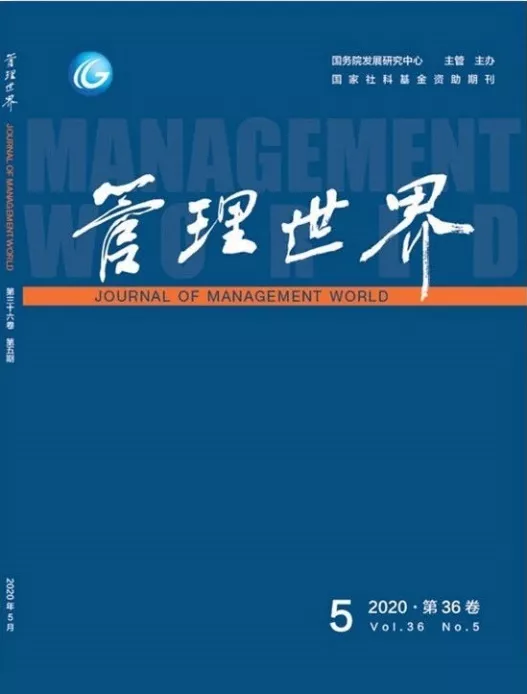岭南观点: 重大突发公共事件下的宏观经济冲击、金融风险传导与治理应对
我院杨子晖教授与其博士生陈雨恬、张平淼合作的论文《重大突发公共事件下的宏观经济冲击、金融风险传导与治理应对》于2020年5月在管理学中文顶级期刊《管理世界》发表。


重大突发公共事件所特有的紧迫性与不确定性为全球经济的发展带来了极大的挑战,而在2020年初“新型冠状病毒肺炎”疫情快速蔓延的背景下,考察突发公共事件对中国宏观经济部门与金融市场的冲击影响,同时深入剖析金融风险在中国各行业及全球股票市场间的传导途径、影响力度以及溢出效应,不仅有助于我们完善与“重大突发公共事件”相适应宏观治理应对机制及风险防范对策,而且有助于避免金融风险产生跨部门、跨市场交叉传导。
纵观该领域的研究,现有文献大多考察了地震、飓风等自然灾害对宏观经济的影响,而较少探讨重大公共卫生事件带来的负面冲击。其次,“非典”、“新冠”疫情等重大突发公共事件持续时间较短,宏观数据时间跨度也相对较短,容易产生“维度诅咒”(Curse of Dimensionality)问题(Marcellino and Sivec,2016),因此难以对宏观经济与金融市场受到的冲击展开全面分析(Galariotis et al.,2018)。再者,现有研究大部分采用干预模型、事件研究法或是自然实验法,仅仅进行事件前后的对比分析,很少就突发事件本身对宏观部门的影响进行全面的考察(Deryugina et al.,2018; Boehm et al.,2019)。此外,Bernanke et al.(2005)等人构造了因子增广向量自回归模型,能够同时考虑存在相互影响的大量全局变量,从而可以有效刻画大量变量间的作用关系(Abbate et al.,2016)。因此,使用FAVAR模型能够有效克服宏观数据类别过多而样本期过短的局限性。最后,较少研究就重大公共卫生事件对资本市场的影响进行深入探讨。然而,最新研究表明,此类突发公共事件造成的市场压力,将会使得金融市场间出现明显的风险溢出效应(White et al.,2015),并导致市场不确定性因素急剧攀升,使得金融机构或市场间原有的相互关联关系发生突变(Maggio et al.,2017)。而不断增加的不确定性将会提高金融体系的脆弱性,从而增加了金融危机爆发的概率(Dicks and Fulghieri,2019)。
有鉴于此,本文采用因子增广向量自回归模型与风险溢出网络方法(Yang and Zhou,2017;杨子晖和周颖刚,2018),考察“非典”、“新冠”此类重大突发公共事件对中国金融市场与宏观经济的冲击与影响。具体而言,首先,我们基于FAVAR模型考察“非典”这一突发公共卫生事件对中国宏观经济与金融市场16个部门、共计174个变量的冲击影响。在此基础上,本文采用前沿的风险溢出网络,研究“新冠”疫情下,中国金融市场各行业间风险传导关系的动态演变。接着,我们进一步分析了“新冠”疫情爆发期间,国际股票市场间的风险溢出效应。最后,本文基于Chen et al.(2019)的风险结构(Risk Profile)框架,进一步探讨了该时期全球各市场的共振关系。
本文的主要结论为:(1)“新冠”疫情在中国春节后的首个交易日(2020年2月3日),对中国各部门造成了显著的负面冲击,金融、房地产、信息技术与日常消费行业在事件期间的风险输出力度大幅提高,医疗保健、公用事业以及工业板块则成为了主要的风险接受方。(2)而在海外疫情爬升、原油价格疲弱的双重冲击下,美国、巴西与加拿大等国成为了全球资本市场的风险来源方,欧洲市场的金融风险也对大部分国家(地区)产生了明显的跨市场传导。(3)在疫情期间,亚太市场间存在一定的风险联动关系,而欧洲金融市场间更是存在极为显著的风险共振乃至一体化现象。(4)“非典”在短期内还是对中国消费、生产价格指数、交通运输等宏观经济部门产生了显著的负面冲击,而“新冠”疫情的影响范围更广,持续时间更长久,因此,我们必须对此保持高度审慎的态度。
基于以上的研究结果,本文还从以下六大方面对中国完善特殊时期宏观治理应对机制与风险防范对策提出了相关建议:(1)长期坚持“促消费、扩内需”的基本政策,促进消费扩容提质与潜力释放;(2)加强对中小企业的金融支持,进一步拓宽直接融资渠道;(3)综合使用出口信保等政策性工具以支持跨国企业发展;(4)提高资金使用效率与财政赤字率,同时确保财政可持续发展;(5)加强金融协调监管机制,针对性防控重点行业金融风险;(6)加强外汇资产负债管理,避免国际风险外溢冲击。
Macroeconomic Shock, Financial Risk Transmission and Governance Response to Major Public Emergencies
Yang Zihui, Chen Yutian and Zhang Pingmiao
Abstract With the rapid spread of COVID-19 in early 2020, investigating the impact of public emergencies on China's economic and further analyze the transmission channels, impact it has become extremely essential to investi⁃ gate and spillover effects of financial risks among various sectors in China, as well as global stock markets. Firstly, the existing literature mainly focus on the impact of nature disasters such as earthquakes and hurricanes on the macro economy, ignoring public health emergencies. Secondly, the short durationofmajor public emergencies may limit the time span of macro data, and finally generates the“Curse of dimension”problem(Marcellino and Sivec, 2016). Therefore, it is difficult to conduct a comprehensive analysis of the impact of these emergencies(Galariotis et al., 2018). Moreover, current research only conduct comparative analysis before and after the emergency, rarely investigating the impact of the emergency itself on the macro sectors(Boehm et al., 2019). Besides, Bernanke et al.(2005)constructed factor augmented vector autoregressive(FAVAR)model, which can analyze a large number of highly interacted global variables at the same time(Abbate et al., 2016), overcoming the limitations of macro data. Finally, the existing studies pay little attention to the impact of major public health emergencies on the capital market. However, the latest research shows that public emergencies will cause obvious risk spillover effects(White et al., 2015), lead to a sharp rise in market uncertainty increase the vulnerability of the financial system(Dicks and Fulghieri, 2019). In this study, we use FAVAR modelto investigate the impact of the SARS on 16 sectors of China's macroeconom⁃ ic and financial markets, with a total of 174 variables. Moreover, this paper uses risk spillover network method to study the dynamic evolution of the risk transmissionfinancial sectors in China during the outbreak of the COVID-19. Then, we further analyze the risk spillover effect in the international stock market. Finally, based on the risk profile framework of Chen et al.(2019), this paper explores the co-movement of the global markets during this period. The main conclusions of this paper are as follows.(1)The COVID-19 caused a significant negative impact on various departments in China on February 3rd, 2020.The risk output of finance, real estate, information technology and daily consumer industries increased significantly during the emergency, while the health care, public utilities and industrial sectors became the main risk recipients.(2)Due to the COVID-19, the United States, Brazil, and Canada became the sources of risk in the global market, while financial risks of the European market also affected most mar⁃ kets.(3)During the epidemic period, co-movement widely existed inside the Asia-Pacific markets. And the intensity of integration and co- movement inside the European financial market has significantly increased. (4)The SARS caused significant negative effects on China's macro economy in the short term. And the impact of the COVID-19 is wider and lasts longer, so we must maintain a much more cautious attitude. Finally, six policy implications are put forwards as follows.(1)We should adhere to the basic of “promoting consumption and expanding domestic demand” for a long time;(2)Further expand the direct financing channels so as to strengthen the financial support for small and medium-sized enterprises;(3)The government should use export credit insurance and other policy tools to support the development of transnational enterprises;(4)In addition, we should improve the efficiency of the use of funds and the rate of fiscal deficit, while ensuring the sustainable development of fi⁃ nance;(5)It is very necessary for government to strengthen the financial coordination and supervision mechanism to prevent and control the financial risks of key sectors;(6)We should also improve the management of foreign exchange assets and liabilities to avoid the impact of international risk spillover.

杨子晖
中山大学岭南学院金融系主任、中山大学高级金融研究院副院长,兼任中国金融学会理事、广东省本科高校金融学教指委副主任、广东金融学会副秘书长、中山大学社科学科发展委员会委员。获评为国家级高层次青年人才、国家“万人计划”青年拔尖人才、国家社科基金重大项目首席专家、全国百篇优秀博士学位论文获得者、教育部新世纪优秀人才。他曾为美国斯坦福大学经济系、麻省理工(MIT)Sloan商学院访问学者,并先后主持国家社科基金重大项目、教育部哲学社会科学研究后期资助重点项目、国家自然科学基金面上项目等科研项目。
他曾在商务印书馆出版个人专著,并在Management Science、Journal of Futures Markets、《中国社会科学》、《经济研究》、《管理世界》、《世界经济》、《经济学(季刊)》、《管理科学学报》、《金融研究》、《统计研究》等国内外刊物发表论文近60篇,曾以第一(或独立)完成人身份获得“教育部第八届高等学校科学研究优秀成果奖(人文社会科学)一等奖”、“全国百篇优秀博士学位论文奖”、“广东省第八届哲学社会科学优秀论文一等奖”、“第四届刘诗白经济学奖”、“广东省金融学会优秀金融科研成果一等奖”、“报送抗击新冠肺炎疫情决策咨询报告先进个人”、“岭南董事会教师杰出科研贡献一等奖”以及“中山大学优秀硕士生导师”等奖项,指导的学生论文曾获得“全国优秀金融硕士学位论文”等奖项。



